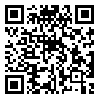Volume 16, Issue 1 (2014)
JAST 2014, 16(1): 1-19 |
Back to browse issues page
Download citation:
BibTeX | RIS | EndNote | Medlars | ProCite | Reference Manager | RefWorks
Send citation to:



BibTeX | RIS | EndNote | Medlars | ProCite | Reference Manager | RefWorks
Send citation to:
Ansari V, Salami H, Veeman T. Distributional Consequences of Subsidy Removal from Agricultural and Food Industry Sectors in Iran: A Price-based SAM Analysis. JAST 2014; 16 (1) :1-19
URL: http://jast.modares.ac.ir/article-23-184-en.html
URL: http://jast.modares.ac.ir/article-23-184-en.html
1- Department of Agricultural Economics, University of Tehran, Karaj, Islamic Republic of Iran.
2- Department of Resource Economics and Environmental Sociology, University of Alberta, Canada.
2- Department of Resource Economics and Environmental Sociology, University of Alberta, Canada.
Abstract: (6617 Views)
This paper explores the distributive impacts of subsidy removal in agricultural sectors and related industry in Iran, using a social accounting matrix (SAM)-based price model. The structural path analysis approach is used to decompose the overall influences into direct, global, and total effects. The simulation results reveal that a shock therapy strategy, which involves the removal of all subsidies from all food producing sectors at once, amplifies the adverse effects of this policy option, especially on the low income households. Also, results indicate that removing subsidy from food producing sectors has distributional consequences for the Iranian households. The rural low income group is the most adversely affected group while the urban high income group is the least affected among the Iranian households. In addition, reducing subsidy in food industry sector has the largest impact on the households’ welfare. Based on the results of the path decomposition of the households’ expenditure, it is expected that less than 50 percent of the overall effects of subsidy removal appear almost immediately after implementing this policy.
Article Type: Research Paper |
Subject:
Agricultural Economics
Received: 2012/07/16 | Accepted: 2013/05/15 | Published: 2014/01/1
Received: 2012/07/16 | Accepted: 2013/05/15 | Published: 2014/01/1
| Rights and permissions | |
 |
This work is licensed under a Creative Commons Attribution-NonCommercial 4.0 International License. |







